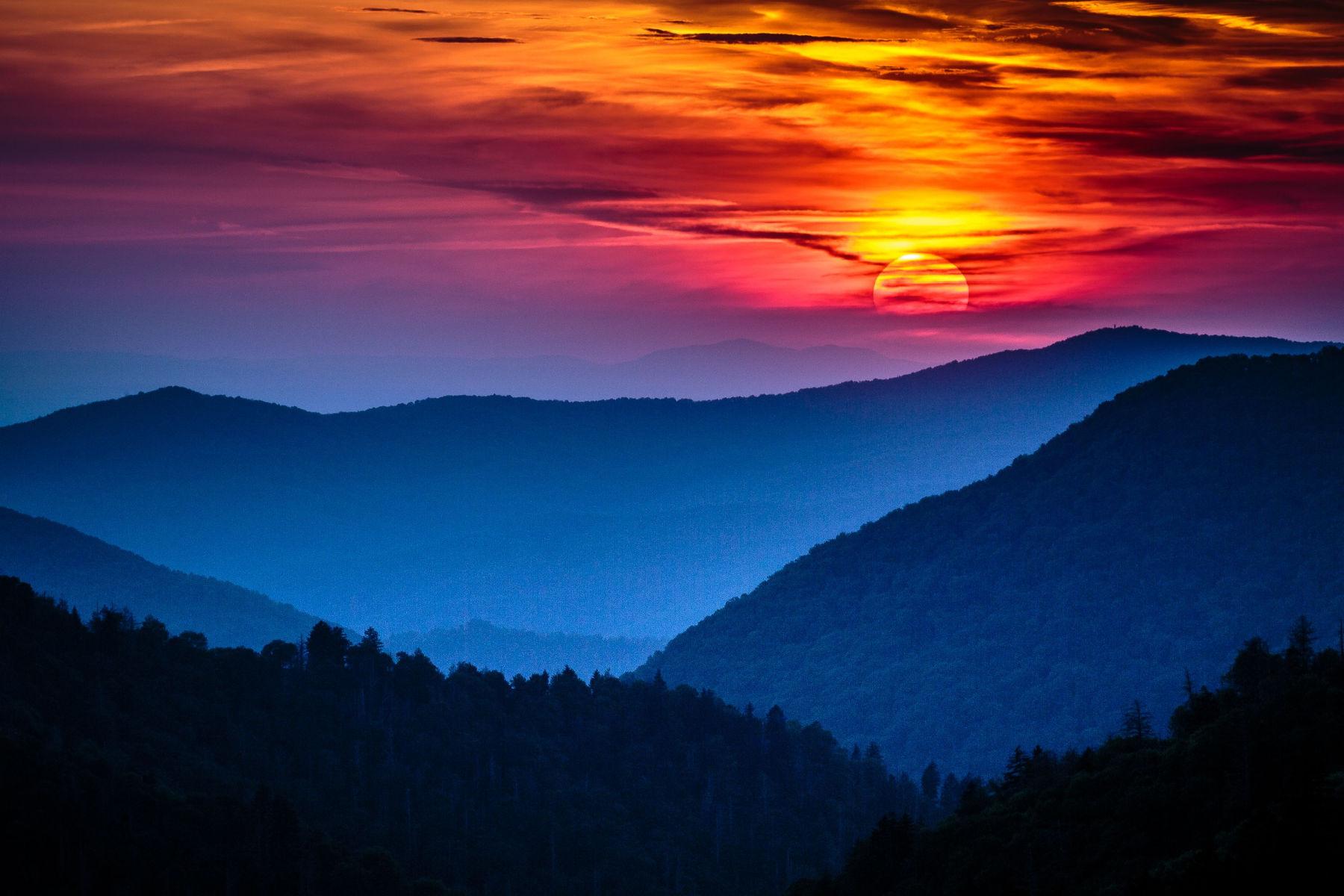
Article Summary: Great Smoky Mountains National Park Facts
Great Smoky Mountains National Park Facts! In this article, More Than Just Parks provides you with 15 amazing facts about one of America’s most magnificent national parks.
More Than Just Parks is your one-stop-shop when it comes to learning everything you’ll need to know about America’s national parks. We’ve got expert guides, beautiful photos, helpful tips, breathtaking films and so much more.
I’ve been to so many of these amazing places since retiring from teaching in 2018. Did I mention that I taught history? I spent a lifetime teaching about the history behind some of these natural wonders. Then I got to see them firsthand. And now I’m sharing some of the incredible stories about these beautiful places with you. It doesn’t get any better than that!
More Than Just Parks takes a deeper dive with its national park facts. We’ve done our homework so that you’ll get more than you bargained for.
Without further ado, let’s dive in.

Table Of Contents: Great Smoky Mountains National Park Facts
Great Smoky Mountains National Park Facts
- Great Smoky Mountains National Park Facts
- Top 5 Great Smoky Mountains National Park Facts
- 1. Hernando De Soto Came Through The Smoky Mountains
- 2. Cherokees Were Among The Earliest Inhabitants Of The Area
- 3. The Spaniards Actually Did Find Gold In The Smoky Mountains
- 4. The Right Of Eminent Domain Was Crucial To The Establishment Of A National Park
- 5. The First Person To Suggest Establishing A National Park In The Smokies Became The “Mother” Of The Park
- Top 10 Great Smoky Mountains National Park Facts
- 6. A Knoxville Drug Company President Became Known As The “Father” Of The Park
- 7. A $5 Million Dollar Gift Made The Great Smoky Mountains National Park Possible
- 8. The Creation Of A National Park Kept The Area From Losing All Of Its Forests
- 9. Eleanor Roosevelt Made Several Visits To The Park Including A Hiking Trek
- 10. Great Smoky Mountain National Park Is America’s Most Popular National Park
- Top 15 Great Smoky Mountains National Park Facts
- 11. The Great Smoky Mountains Are Among The Oldest Mountains In The World
- 12. Great Smoky Mountains National Park Is The Salamander Capital Of The World
- 13. The Civilian Conservation Corps (CCC) Built Great Smoky Mountains National Park
- 14. Clingmans Dome Is The Highest Point In The Great Smokies & The State Of Tennessee
- 15. The Smokiness Of The Smoky Mountains Is Created By Plants
- Watch Our Great Smoky Mountains Film
- Meet The Parks Brothers
- We Hope You’ll Follow Our Journey
Great Smoky Mountains National Park Facts
Some Basic Facts About Great Smoky Mountains
Great Smoky Mountains National Park is a beautiful and historic park located in Tennessee and North Carolina, in the United States. The park covers over 520,000 acres of land and is home to a wide variety of plant and animal life, as well as several unique geological features.
The Great Smoky Mountains are part of the Appalachian Mountains and are known for their beautiful scenery and rich cultural history. The park features a diverse landscape, with forests of pine and hardwood trees, alpine meadows, and crystal clear streams and lakes. The park is also home to a wide variety of plant and animal life, including black bears, white-tailed deer, and over 200 species of birds.
There are many ways to explore and enjoy Great Smoky Mountains National Park. Visitors can take a scenic drive along the park’s roads, go hiking or biking on the park’s trails, or even go fishing or picnicking in the park’s streams and meadows. There are also several historic lodges and cabins located within the park, providing comfortable accommodations for visitors.
Great Smoky Mountains National Park is a beautiful and historic place, offering visitors the opportunity to experience the beauty and majesty of the natural world in a truly special setting. It is a great destination for outdoor enthusiasts, with plenty of opportunities for hiking, camping, and other outdoor activities.
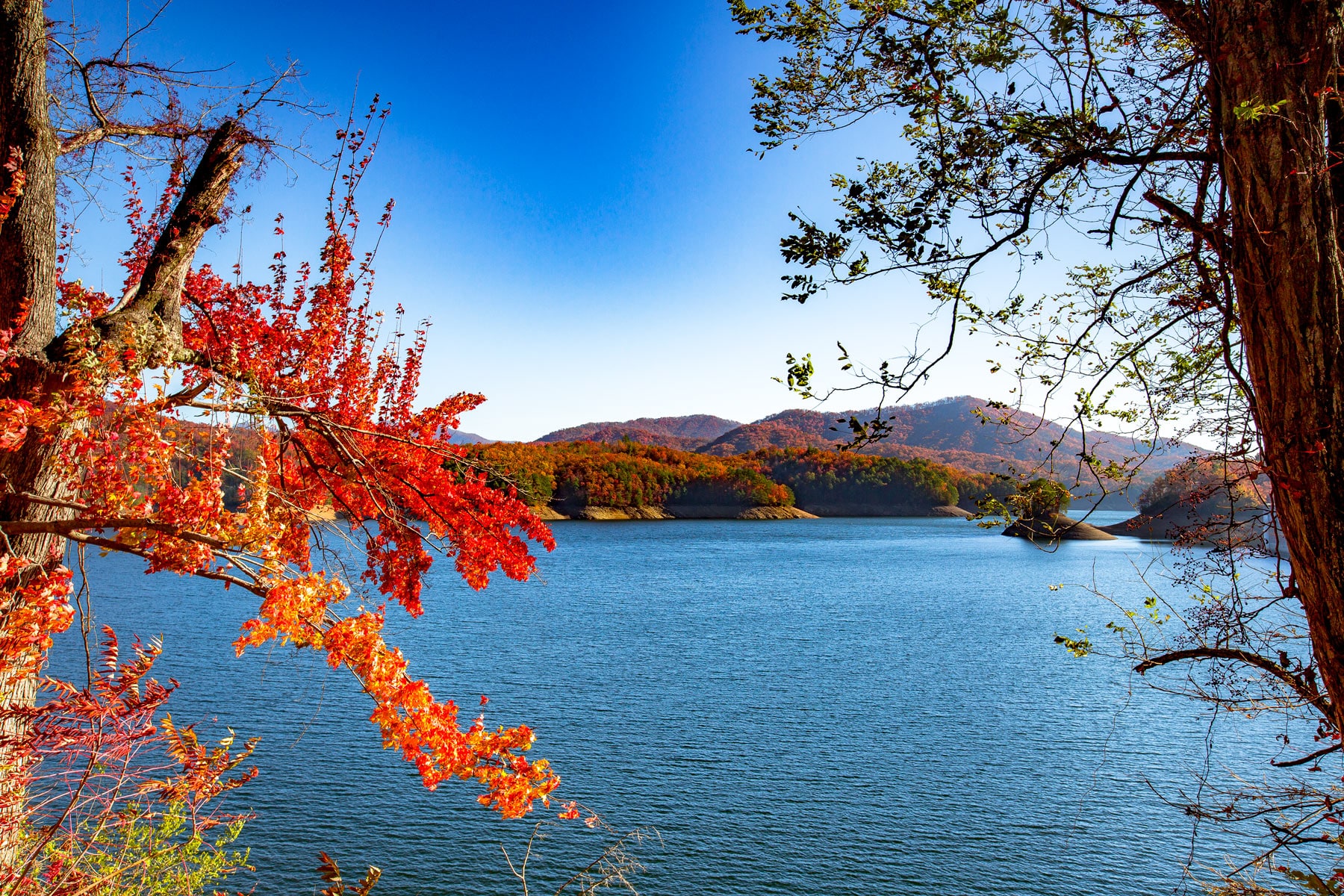
Here Are Some Basic Facts About Great Smoky Mountains
Location: Great Smoky Mountains National Park straddles the borders of the states of Tennessee and North Carolina. The three main entrances to the park are in Gatlinburg, TN; Townsend, TN; and Cherokee, NC.
Acreage: Great Smoky Mountains National Park covers 522,427 acres, divided almost evenly between the states of North Carolina and Tennessee.
Visitation: The Great Smoky Mountains National Park reached its highest number of recreational visitors in 2021, reporting 14.161 million visitors, an increase from the previous value of around 12.4 million in 2020.
Highest Elevation: At 6,643 feet, Clingmans Dome is the highest point in Great Smoky Mountains National Park. It is the highest point in Tennessee.
Lowest Elevation: Abrams Creek at 840 feet.
When Did It Become A National Park? President Franklin D. Roosevelt dedicated the Great Smoky Mountains National Park on September 2, 1940, “for the permanent enjoyment of the people.”
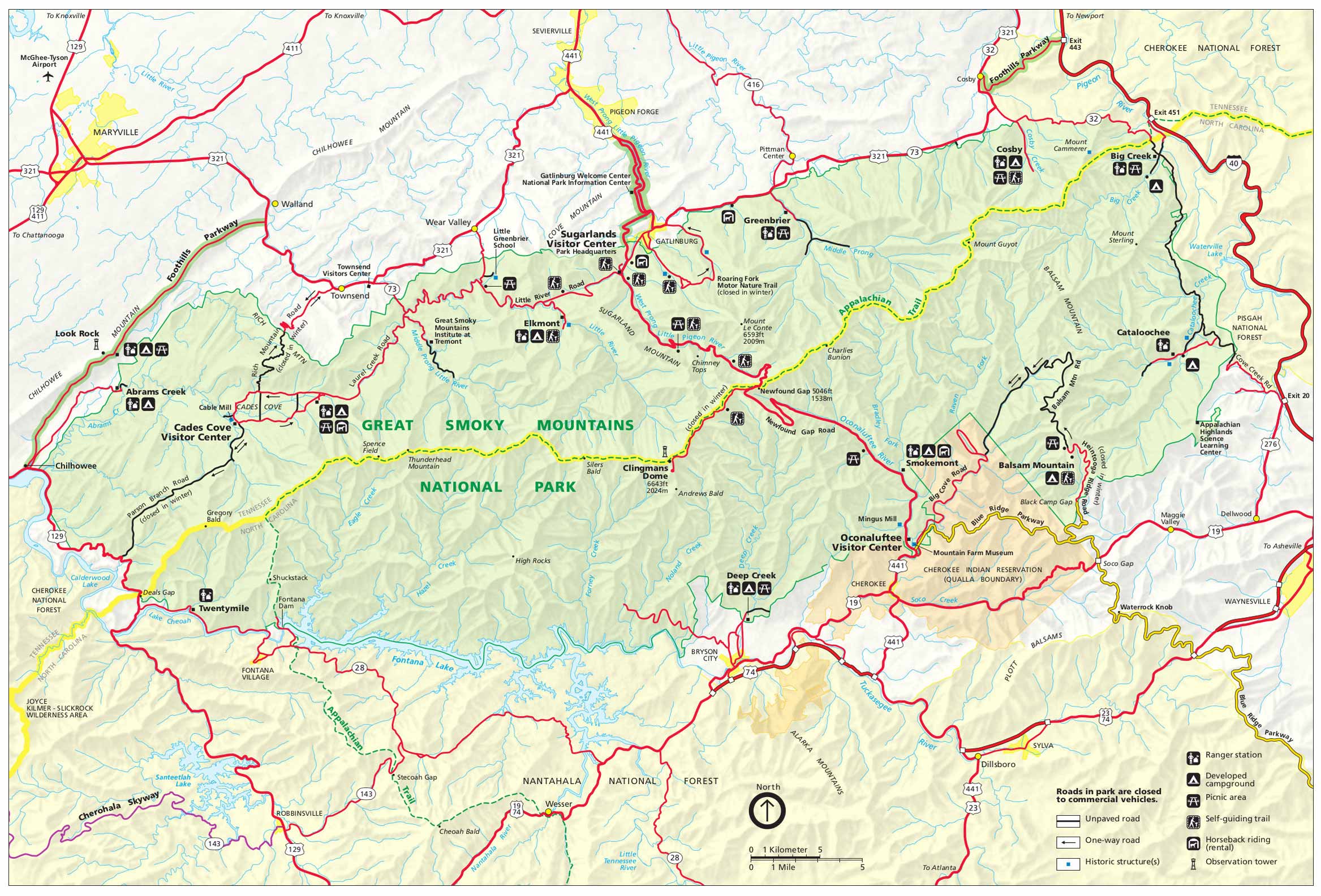
CHECK OUT: 15 INCREDIBLE THINGS TO DO – Great Smoky Mountains National Park
Top 5 Great Smoky Mountains National Park Facts
1. Hernando De Soto Came Through The Smoky Mountains
One of my favorite Great Smoky Mountain National Park Facts is that, in 1540, Spanish explorer Hernando De Soto came through the Great Smoky Mountains.
At the time, De Soto was the governor of Cuba. He landed seven ships with 600 men near Tampa, Florida. DeSoto is thought to have led the first European expedition to explore what is today the Southeastern United States.
According to one theory, De Soto traveled from Florida’s west coast, north into Georgia and then across the southern tip of the Smokies into the Carolinas.
Hernando de Soto is more known for being a conquistador. He helped conquer many lands in parts of Central and South America, including those of the Inca Empire.
But he was also an explorer. De Soto explored and mapped parts of nine states in the southeastern part of the United States.
Some historians believe that his expedition went north into the Carolinas, crossed back into Tennessee and then down through the Tennessee Valley.
To learn more about this remarkable man, I recommend: Hernando De Soto: A Savage Quest in the Americas by David Ewing Duncan.
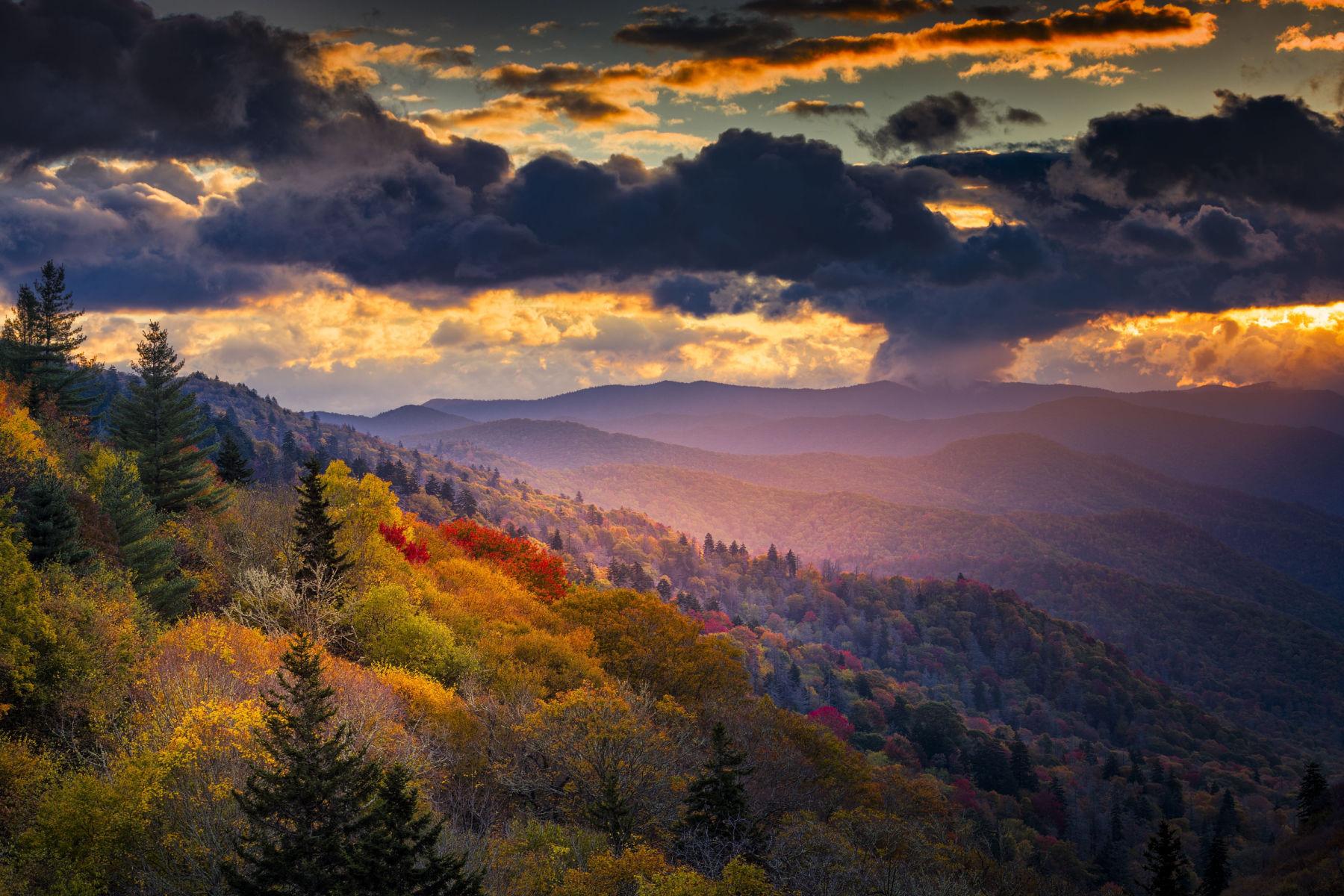
CHECK OUT: Spring In The Smoky Mountains
2. Cherokees Were Among The Earliest Inhabitants Of The Area
As a retired history teacher and lifelong history buff, I am fascinated by origin stories. If you find them interesting, too, then among the amazing Great Smoky Mountain National Park Facts you may be intrigued to learn that, during De Soto’s journey, his expedition came in contact with Native Americans living in the area.
As a matter of fact, the name “Cherokee” was first recorded in the writings of De Soto’s historian.
According to the National Park Service, the Cherokee Indians, a branch of the Iroquois nation, can trace their history in this region back more than a thousand years.
Originally their society was based on hunting, trading, and agriculture. By the time European explorers and traders arrived, Cherokee lands covered a large part of what is now the Southeastern United States.
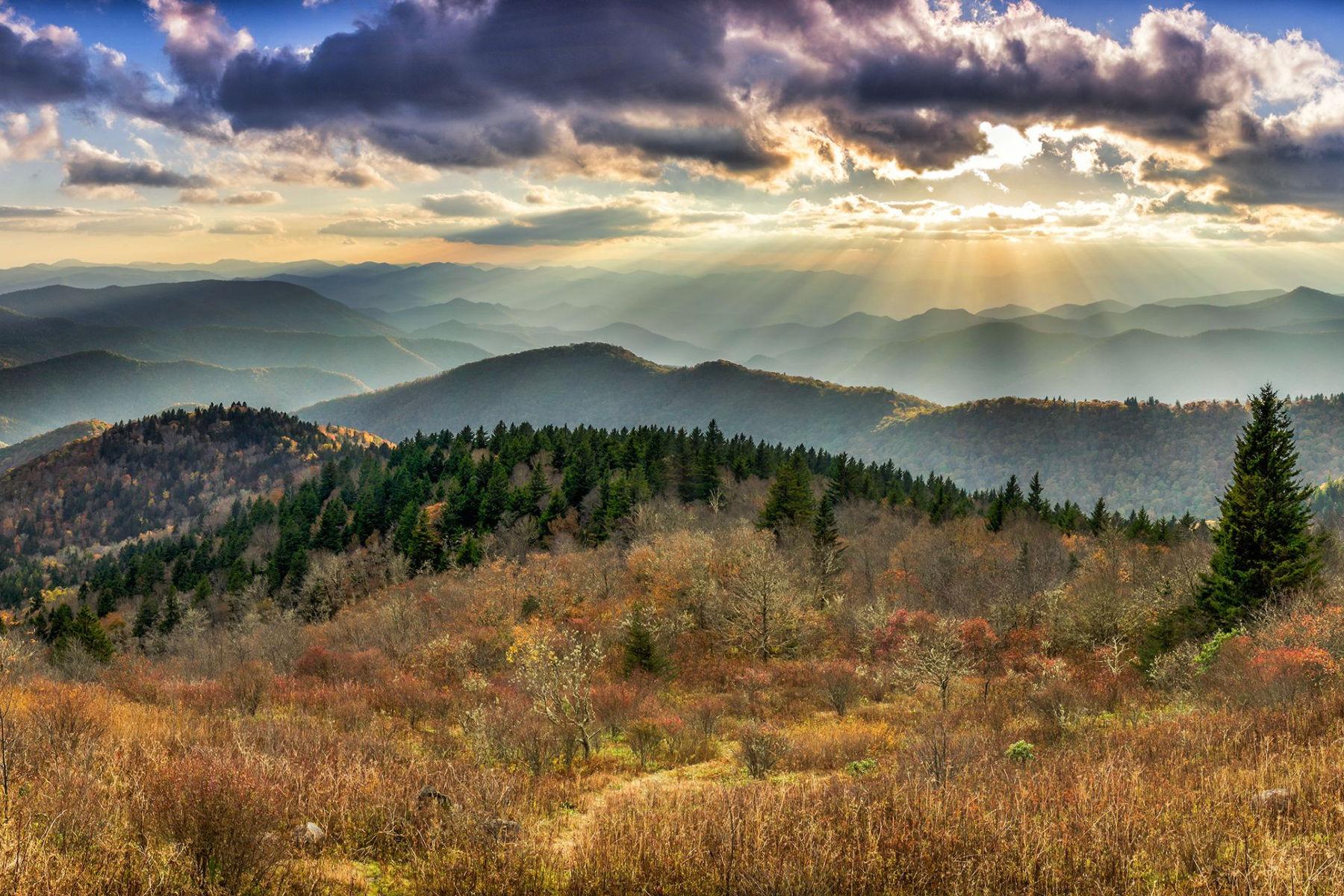
Cherokee Tribal Customs
The Cherokee lived in small communities, usually located in fertile river bottoms. Homes were wooden frames covered with woven vines and saplings plastered with mud. These were replaced in later years with log structures.
Each village had a council house where ceremonies and tribal meetings were held. The council house was seven-sided to represent the seven clans of the Cherokee: Bird, Paint, Deer, Wolf, Blue, Long Hair, and Wild Potato.
Each tribe elected two chiefs-a Peace Chief who counseled during peaceful times and a War Chief who made decisions during times of war.
However, the Chiefs did not rule absolutely, decision making was a more democratic process, with tribal members having the opportunity to voice concerns.
Today, the Eastern Cherokee maintain traditions of music, storytelling, dance, foodways, carving, basket-making, headwork, pottery, blowgun-making, flint-knapping, and more.
Their language, which was forbidden by the federal schools for more than half a century, is being revived in classrooms and the community.

CHECK OUT: 11 AMAZING Facts About Acadia National Park
3. The Spaniards Actually Did Find Gold In The Smoky Mountains
Another one of the fascinating Great Smoky Mountain National Park Facts is that the Spaniards actually did find gold in the Smoky Mountains.
The staggering quantity of gold the conquistadors extracted from the Americas allowed Spain to become the richest country in the world. The thirst for gold to pay for armies and gain personal enrichment resulted in waves of expeditions of discovery and conquest from 1492 onwards.
In only the first half-century or so of the Spanish conquest of the Americas, over 100 tons of gold were extracted from the continent.
De Soto’s expedition, like so many others, was driven by the search for gold. He didn’t find it in the area however.
Fast forward twenty-seven years later, however, and another Spaniard, Juan Pardo, actually did find gold-and silver too! It was discovered somewhere in the region originally visited by De Soto.
For the next 125 years, Spaniards would return to the area of the Blue Ridge Mountains in search of more gold and silver.

CHECK OUT: 11 AMAZING Facts About Arches National Park
4. The Right Of Eminent Domain Was Crucial To The Establishment Of A National Park
One of the lesser known Great Smoky Mountain National Parks Facts concerns a concept known as “Eminent Domain.”
Eminent domain refers to the process by which the government may seize private property with proper compensation, but without the owner’s consent.
A court case was brought by John W. Oliver of Cades Cove, Tennessee.
John and Lucretia Oliver, the original owners of the cabin, were the first permanent white settlers in Cades Cove. When they moved to Cades Cove in the 1820s, the only road into the cove was a rudimentary trail and there was not a working grist mill.
Oliver didn’t want to sell his land so he challenged the Tennessee Park Commission’s right to take more than 300 acres of land which he owned in Cades Cove and turn it over to the federal government as part of their plan to create a national park.
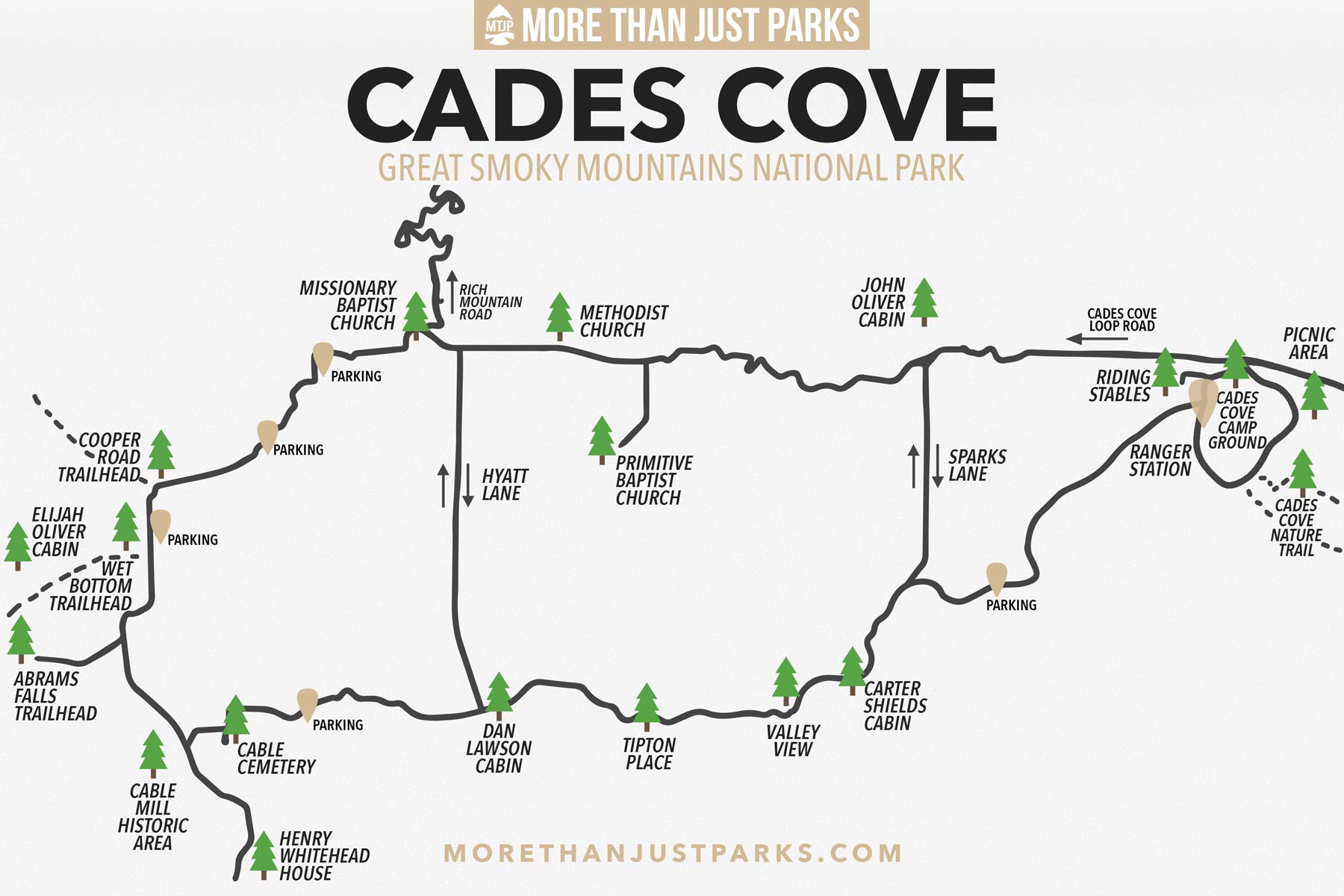
Oliver’s Case Went All The Way To The Supreme Court
The case went all the way to the Supreme Court which ruled that the state did have such a right. If Oliver had won his case it likely would have brought about an end to the movement to create a national park in Tennessee.
New here’s another interesting fact. The John Oliver cabin is one of the oldest structures in the Great Smoky Mountains National Park.
The exact year the cabin was built is unknown, but since they settled in the area in the 1820s, it has to be one of the oldest structures in the area.
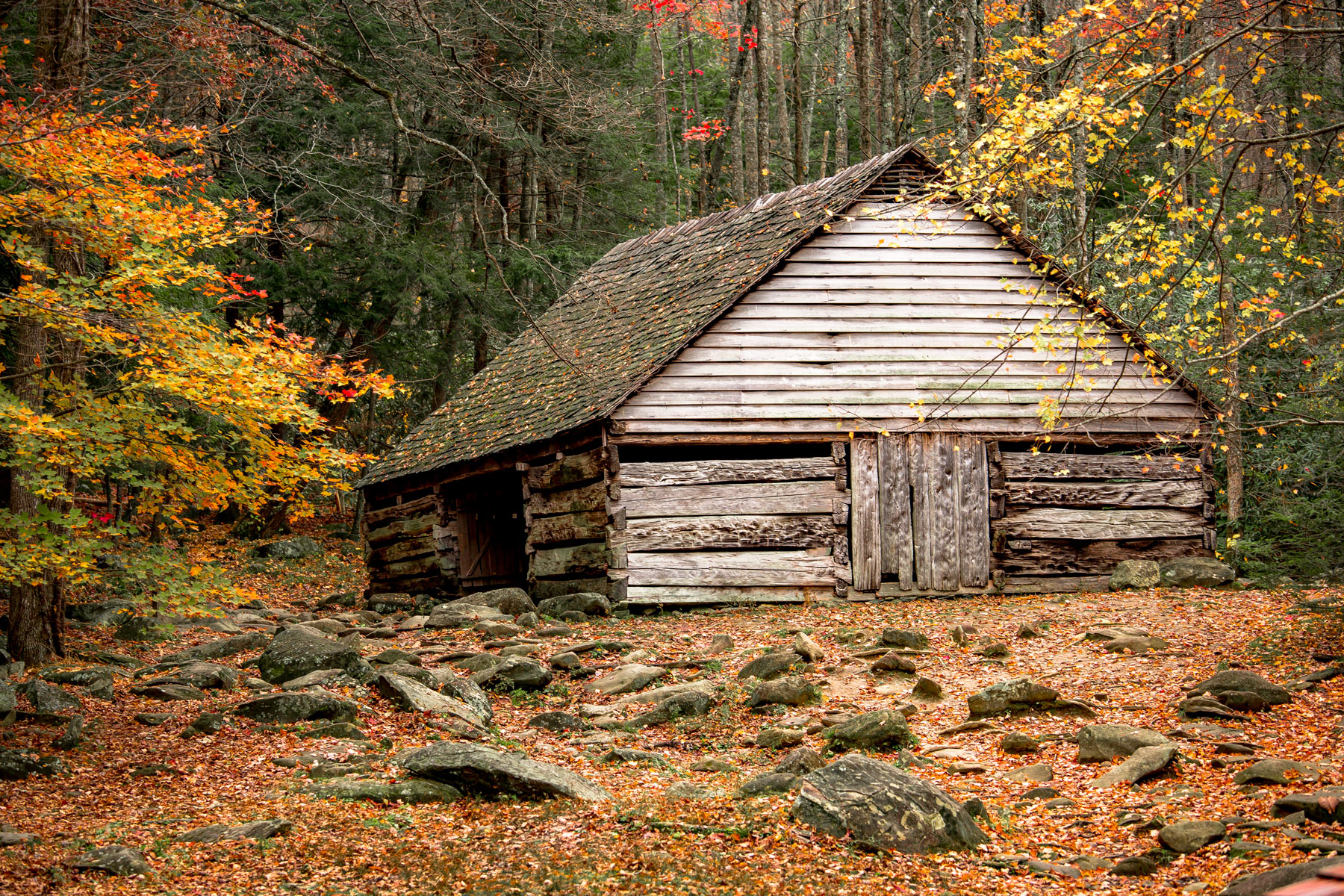
CHECK OUT: 12 AMAZING Facts About Big Bend National Park
5. The First Person To Suggest Establishing A National Park In The Smokies Became The “Mother” Of The Park
As I do research into the stories surrounding the creation of America’s national parks, I continue to be amazed by the efforts of individuals who truly have made a difference when it comes to their establishment.
One of my favorite Great Smoky Mountains Nation Park Facts concerns one of those individuals – Anne Davis.
She was born in Louisville, Kentucky, and moved to Knoxville with her husband, Willis, in 1915. The pair quickly fell in love with the Smokies. Driven partially by their love of nature, the couple decided to explore the western national parks during the summer of 1923.
On their way back to Tennessee, Anne asked her husband, “Why could not our Great Smokies be made a national park—and those magnificent monarchs of the forest preserved for posterity?”

Anne might not have realized it at the time, but her simple question inspired the movement that would eventually lead to the creation of Great Smoky Mountains National Park (GSMNP).
In 1924, Anne Davis became the third woman to serve in the Tennessee legislature. She sponsored legislation that would allow the purchase of more than 78,000 acres of land from Little River Lumber Company for the national park. Although local support for a national park was high, the bill encountered opposition in the House.
Critics believed the area was little more than “stump land,” so Anne organized an inspection trip for the entire legislature in 1925. The trip swayed the critics’ and the bill was soon signed into law.
Today Anne Davis is recognized as the “Mother” of Great Smoky Mountains National Park.
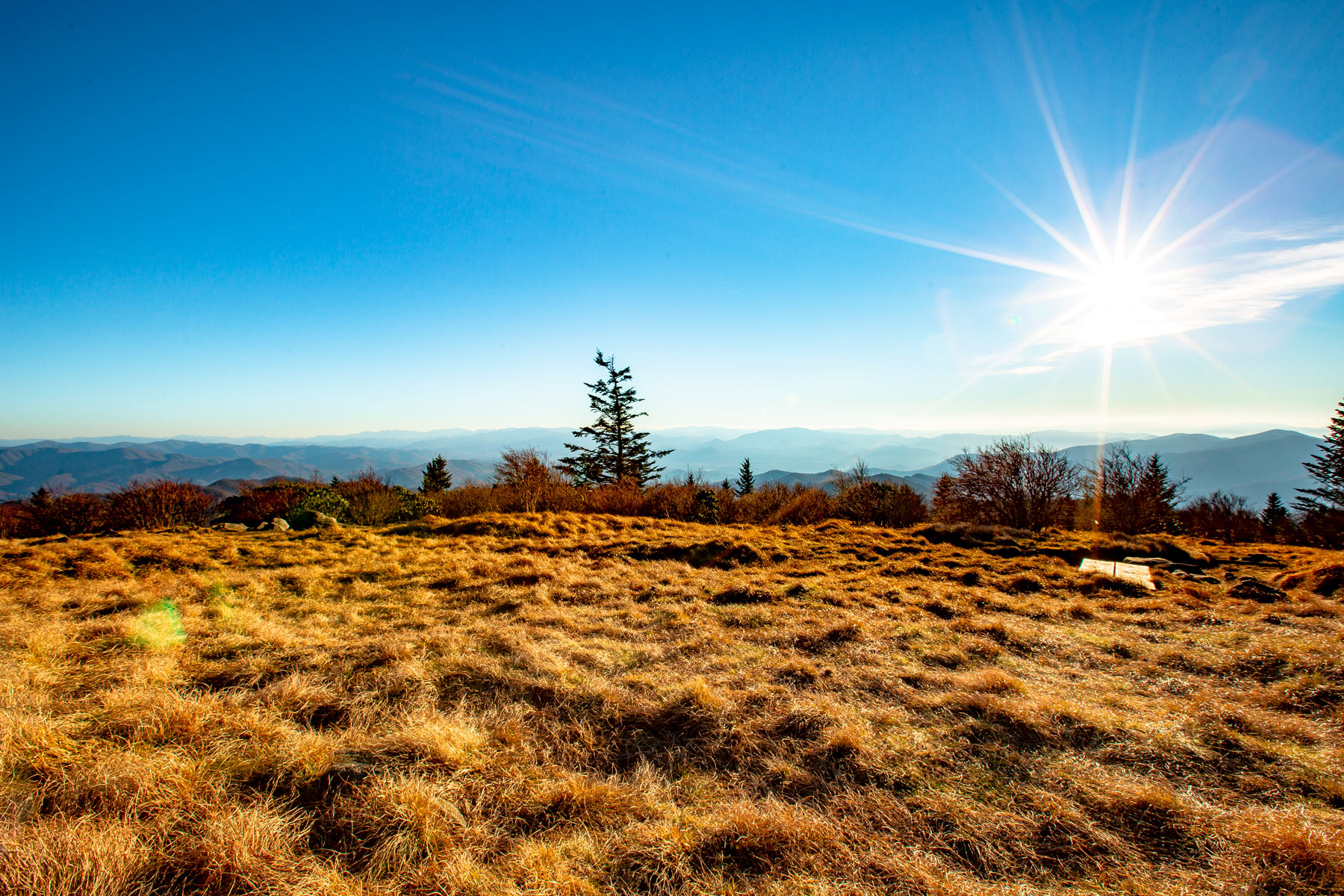
CHECK OUT: 14 AMAZING Facts About Biscayne National Park
Top 10 Great Smoky Mountains National Park Facts
6. A Knoxville Drug Company President Became Known As The “Father” Of The Park
If Anne Davis is recognized as the “Mother” of the Great Smoky Mountains National Park then you’re probably wondering who the father is. Historians have awarded that title to Colonel David Chapman. And it’s another one of our amazing Great Smoky Mountains National Park Facts.
While Anne Davis was getting elected to the Tennessee Legislature, according to the National Park Service, David Chapman played a leading role in the tough battle to bring the park idea to fruition, especially on the Tennessee side of the park.
Chapman, president of a Knoxville drug company, became totally committed to the park movement and dealt successfully with multiple obstacles such as opposition from park opponents, lack of funding for land purchase and controversial condemnation actions.
As chairman of the Great Smoky Mountains Conservation Association, he was the Tennessee leader for the park campaign and developed close relationships with parties in both Tennessee and North Carolina working toward creation of the national park.
Chapman, along with Anne Davis, deserves much of the credit for shaping Great Smoky Mountains National Park as we know it today.

CHECK OUT: 12 AMAZING Facts About Capitol Reef National Park
7. A $5 Million Dollar Gift Made The Great Smoky Mountains National Park Possible
Not all of the important figures in the establishment of the Great Smoky Mountains National Park are relatively unknown to history.
Among the fascinating Great Smoky Mountains National Park Facts is the important role played by a man who was recognized as one of America’s leading philanthropists of the time.
John D. Rockefeller, Jr., the son of oil legend John D. Rockefeller, contributed significantly to the creation of Great Smoky Mountains National Park in Tennessee and North Carolina.
In 1928, he gave $5 million from a family foundation, in memory of his mother Laura Spelman Rockefeller, to help acquire land for the park.
This contribution was critical in the creation of the park as, unlike other national parks where authorities already owned the land, most of the area needed to create the park was owned by lumber companies.
His support helped to buy the land and made it easier to negotiate with the lumber companies to include the land in the park.
It was one of his chief philanthropies, and his contribution was a significant factor in the creation of the national park.
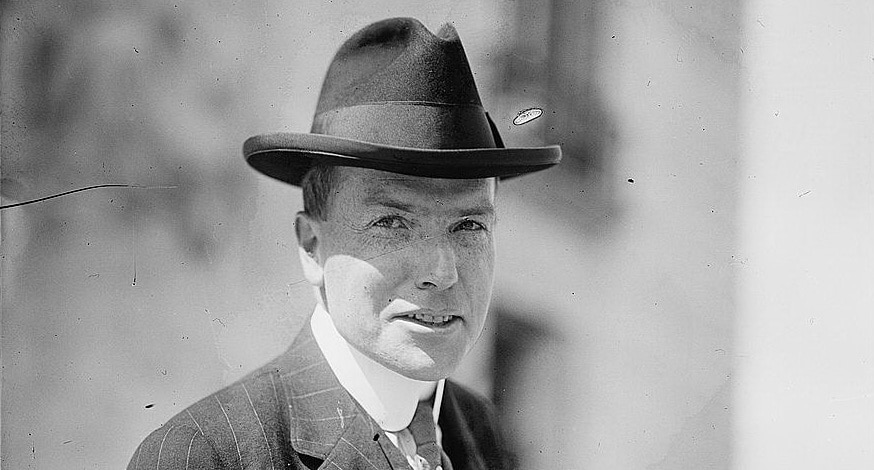
CHECK OUT: 15 (FASCINATING) Death Valley National Park Facts You Probably Didn’t Know
8. The Creation Of A National Park Kept The Area From Losing All Of Its Forests
One of my favorite Great Smoky Mountains National Parks Facts has to do with the impact of the park on its surrounding ecosystem. The establishment of a national park kept the area from losing all of its forests.
By the 1880s, lumber companies were turning their attention towards the South. They had already largely emptied the virgin forests of the Great Lakes region. Several companies, including the Little River Lumber Company in Townsend, Tennessee, bought thousands of acres on the Tennessee side of the Smokies.
Logging operations commenced in the area and would continue until the area was finally protected by the federal government as part of its effort to create a national park.
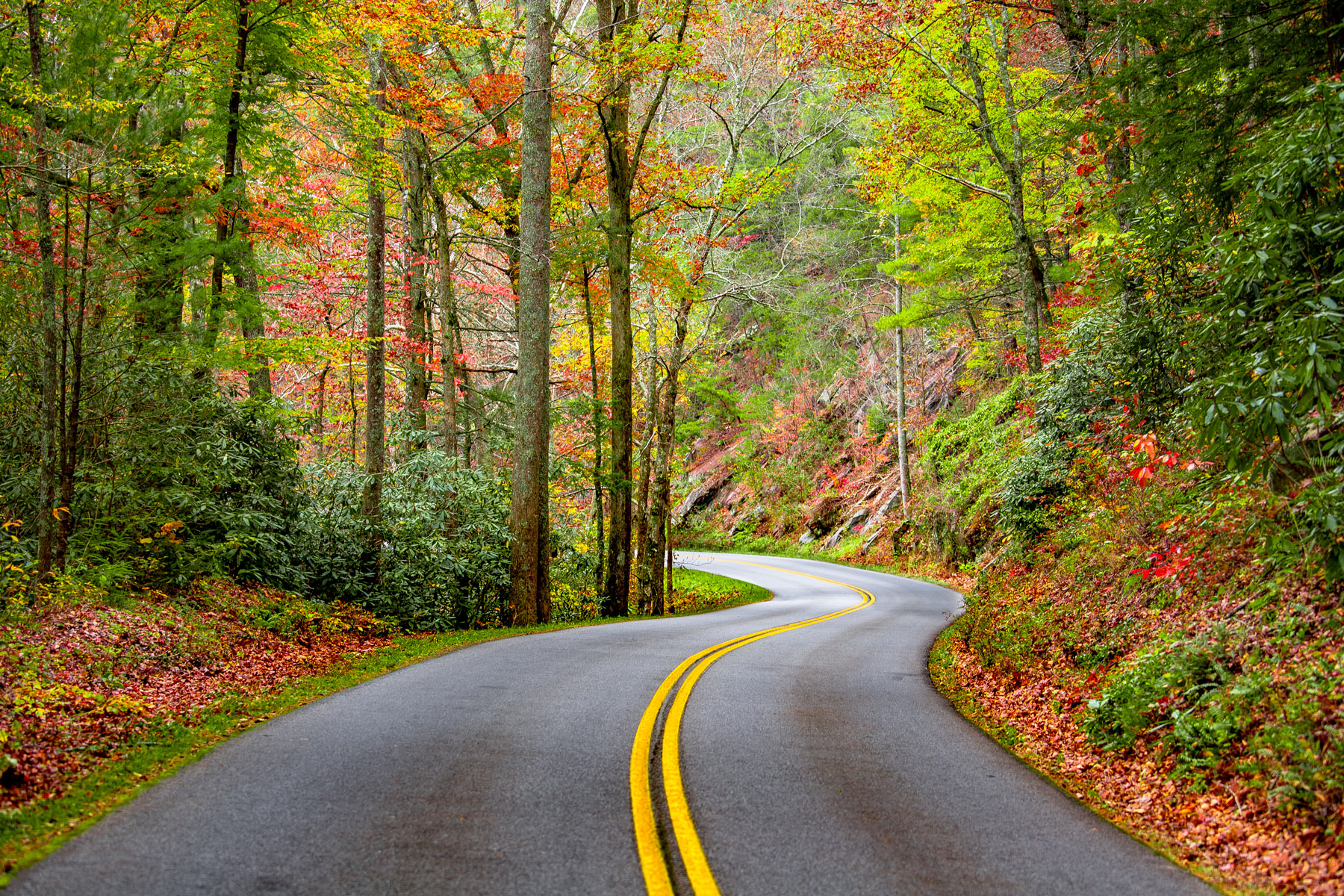
National Parks Mark Sense And Dollars Too!
Protests were lodged by those who believed that a national park would harm the local economy.
Fast forward to the twenty-first century. A survey commissioned by the National Park Service showed that visitors to the GSMNP spent more than $818 million in gateway communities located around the boundaries of the national park.
When it comes to economic growth versus conservation, it actually makes sense (and dollars) for states to have national parks.
Visitors to national parks and other nearby federal lands contribute billions to regional economies while creating hundreds of thousands of private sector jobs. In turn, the labor income from these jobs spurs more economic growth in nearby communities.
CHECK OUT: 12 AMAZING Facts About Dry Tortugas National Park
9. Eleanor Roosevelt Made Several Visits To The Park Including A Hiking Trek
Just when you thought we couldn’t come up with any more unbelievable Great Smoky Mountains National Park Facts we’ve come up with another one.
On September 2, 1940, President Franklin D.. Roosevelt dedicated the Great Smoky Mountains National Park for the “for the permanent enjoyment of the people.”
The President’s wife, Eleanor Roosevelt, made the trip with him.
She was so enthralled with the park that the First Lady returned for another trip. Mrs. Roosevelt spent time in Cades Cove and went hiking along the Forge Creek Road. She actually stopped to take a drink from the waters of Forge Creek.
The President was supposed to accompany the First Lady on this trip, but the Secret Service decided that it would be too difficult to move him in the event of an emergency so he was unable to go.
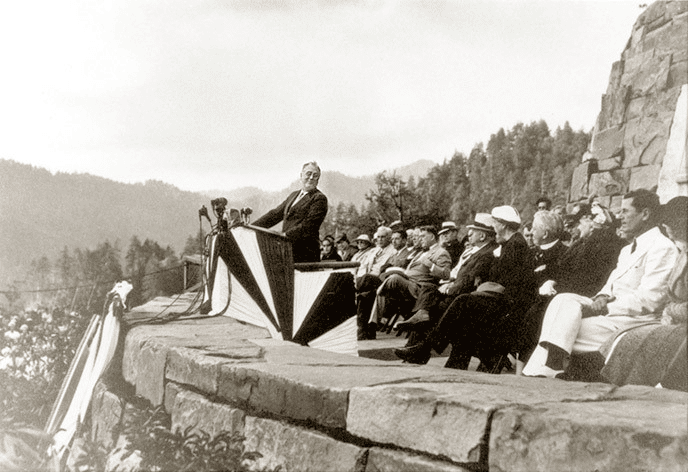
America’s Most Influential First Lady
I love doing historical research which is probably why I ended up teaching history for almost 30 years.
If you’re someone who follows sports then you’re likely familiar with rankings. As a long-time resident of Georgia, I assure you that I do follow sports especially college football.
In college football and almost everything else, most rankings tend to change over time. And yet the woman considered by many knowledgeable experts to be America’s Most Influential First Lady hasn’t changed over time.
After the scrutiny of three expert opinion surveys over twenty years, Eleanor Roosevelt is still ranked first among all other women who have served as America’s First Ladies, according to an expert opinion poll conducted by the Siena (College) Research Institute (SRI).
America’s Longest Serving First Lady
Eleanor Roosevelt served as First Lady for over 12 years. She played an active role in advising her husband and was the first first lady to hold her own press conferences.
Mrs. Roosevelt also championed causes, such as Women’s Rights, and supported programs, such as the one which gave African Americans the opportunity to become fighter pilots during World War Two.
Eleanor Roosevelt was the first first lady to remain an influential political force after her husband’s death. She served as Chair of the United Nations Commission on Human Rights.
If you’re interested in learning more about this remarkable First Lady then I recommend Eleanor Roosevelt, Fighter for Justice: Her Impact on the Civil Rights Movement, the White House, and the World by Ilene Cooper.
.jpg/2560px-Eleanor_Roosevelt_UDHR_(27758131387).jpg)
CHECK OUT: 10 MUST-SEE Historic Sites In New York
10. Great Smoky Mountain National Park Is America’s Most Popular National Park
One of my favorite Great Smoky Mountains National Park Facts is that it’s America’s most popular national park.
In 2021, the park had over 14 million visitors. That made it the #1 most visited national park in America and it wasn’t even close! Zion National Park came in at #2 with 5 million visitors.

National Parks Versus National Park Sites
Now there’s a difference between “National Parks” vs “National Park Sites.”
The National Park System encompasses 423 national park sites in the United States.
They span across more than 84 million acres, with parks in each state and extending into the territories, including parks in Puerto Rico, the Virgin Islands, American Samoa, and Guam.
Only 63 of these sites, however, are capital letter national parks and not every state has one. The difference has to do with the level of federal protection that the area receives.
To Learn More About The Different Types Of National Parks Check Out Our Article: What Is A National Park Really?
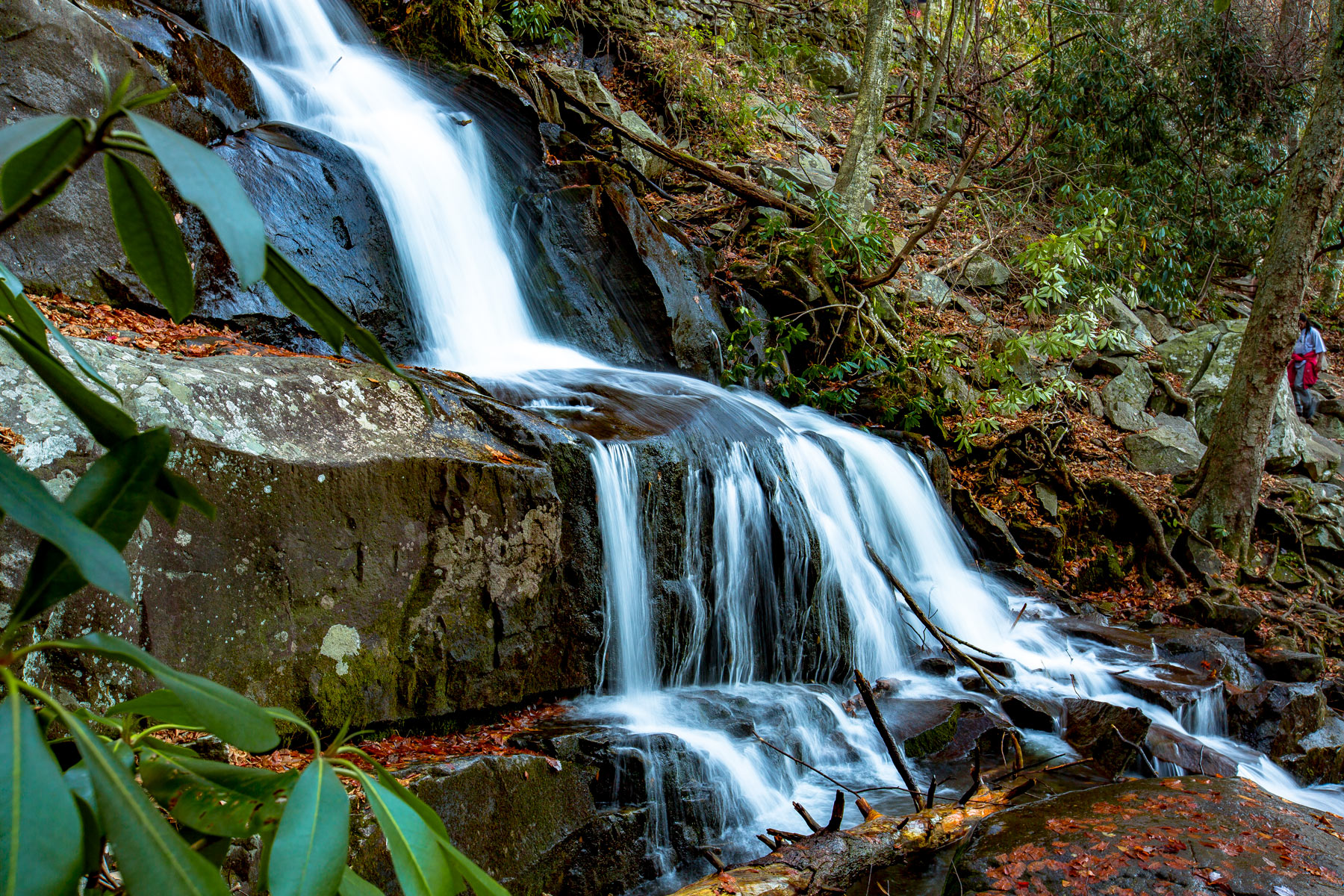
CHECK OUT: 25 BUCKET LIST Famous Landmarks In America (MUST-SEE)
Top 15 Great Smoky Mountains National Park Facts
11. The Great Smoky Mountains Are Among The Oldest Mountains In The World
Geologists estimate that the Great Smoky Mountains are between 200 and 300 million years old.
By examining the amount of weathering that these rocks have experienced as well as using the age of the particles found in local soil and trees, scientists have been able to determine just how old these mountains happen to be.
The majority of the rocks found in Great Smoky Mountains National Park are sedimentary and were formed by the accumulation of materials such as clay, silt, sand, gravel, and small amounts of calcium carbonate in flat-lying layers.
These rocks are composed mainly of sandstone and shale and are some of the oldest in the park, dating back to the Proterozoic Era, around 800-545 million years ago.
They were formed as vast amounts of sediment were washed down from the surrounding highlands into lowland basins.
The rocks of these ancient highlands were over one billion years old and were similar to the ancient granite and gneiss found in the southeastern parts of the park.
These early ocean bottom depositions formed along the ancient margin of the North American continent as a larger super-continent broke apart.
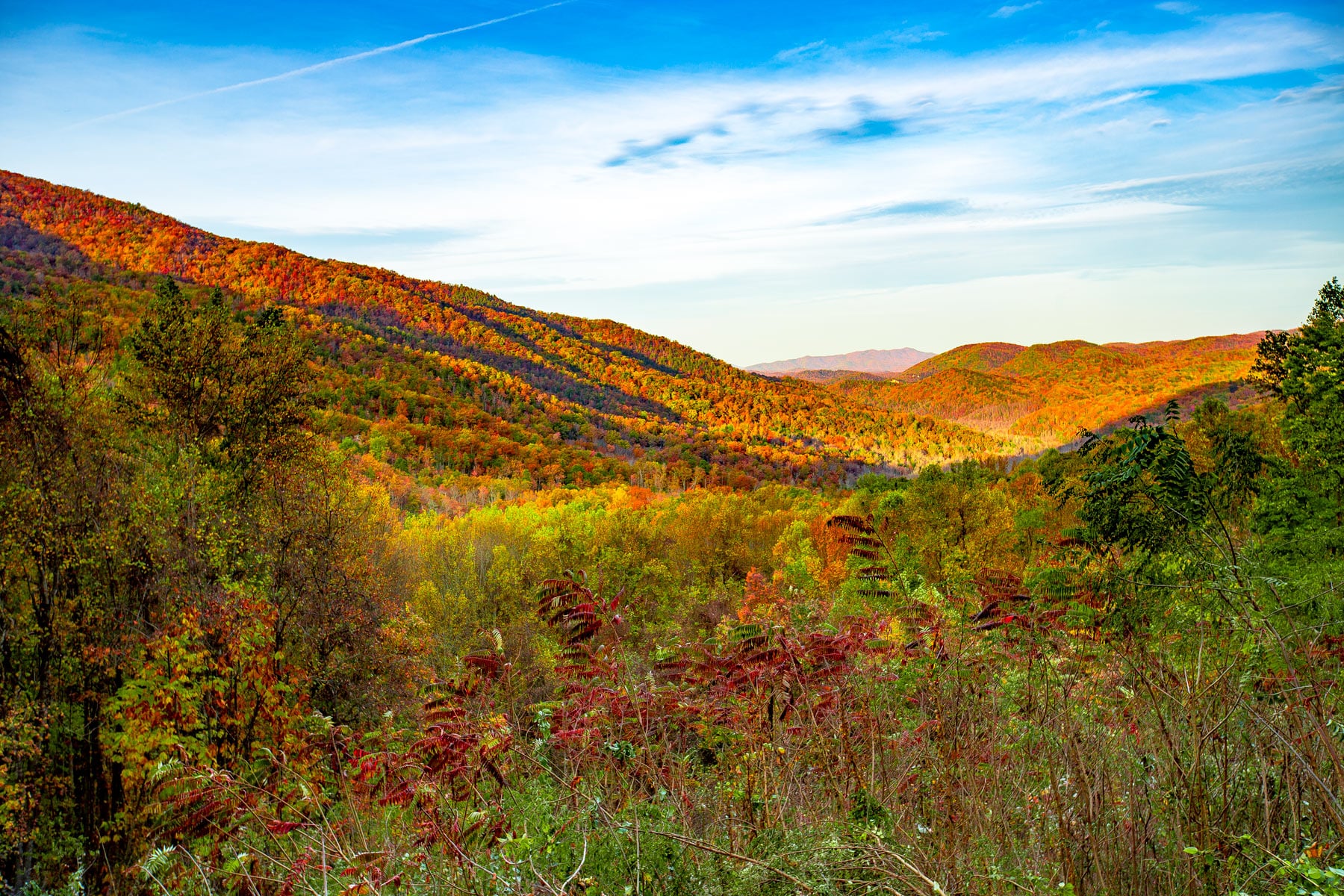
CHECK OUT: 10 BEST Revolutionary War Sites In America
12. Great Smoky Mountains National Park Is The Salamander Capital Of The World
Another of the fascinating Great Smoky Mountains National Park Facts has to due with salamanders.
The Great Smoky Mountains are known as the “Salamander Capital of the World!”
Salamanders are an especially abundant and diverse group in the Great Smokies. In fact, the great majority of vertebrate (backboned) animals, including human visitors, in the park on any given day are salamanders.
There are 24 species of lungless salamanders in the park. The family has undergone an extraordinary level of evolutionary diversification in the southern Appalachian Mountains. As their family name implies, these salamanders lack lungs.
They “breathe” (exchange oxygen and carbon dioxide) through the walls of tiny blood vessels in their skin and linings of their mouths and throats.
These creatures use walls of tiny blood vessels in their skin and linings of their mouths and throats to exchange oxygen and carbon dioxide. You are likely to find salamanders near creeks and under rocks.
Lungless salamanders occur everywhere in the Great Smokies, in and along streams and under rocks, logs, and leaf litter in the forests.

13. The Civilian Conservation Corps (CCC) Built Great Smoky Mountains National Park
Another one of my favorite Great Smoky Mountains National Parks has to do with the Civilian Conservation Corps.
When United States was in the throes of the Great Depression in 1933, newly elected president Franklin Roosevelt knew that he needed to take bold action.
The New Deal programs were started. One of them was the Civilian Conservation Corps (CCC). Roosevelt’s primary goal for the program was to take unemployed youths out of the cities and build up their health and morale while contributing to the economic recovery of the country.
Not only would these young men receive wages for their work, but money would also be sent to their dependents so that the program would provide benefits to the greatest number of people.

The CCC Put Young Men Back To Work
The first accomplishment of the CCC was having 250,000 young men working within three months of its establishment–the greatest peacetime mobilization of American youth.
The next major accomplishment came in the coordination and development of a nationwide state parks program, one that was instrumental in establishing the first state parks for Virginia, West Virginia, South Carolina, Mississippi, and New Mexico.
Concerning national parks and monuments, the Park Service asserted that during the first few months of operation the CCC advanced the cause of forestry work dramatically.
It was estimated that millions of dollars of annual losses caused by forest fires, tree diseases, insects, rodent infestation and soil erosion were prevented by this coordinated conservation effort.

What The CCC Did In The Great Smoky Mountains
After years of logging and damage done to the land, the CCC focused on restoring the Smoky Mountains with projects focused on planting trees, fighting fires, and addressing erosion.
The organization performed conservation activities such as reforestation, road construction, and agricultural management.
There were 22 camps just in the Great Smoky Mountains alone, which means about 4,000 men worked in the area. In fact, the Great Smoky Mountains National Park had more CCC camps than any other two parks combined.
Historian James Jackson wrote, “Perhaps no works of the CCC have gotten more public use than those of the Great Smoky Mountains National Park… And nearly all of its infrastructure was built with CCC labor.”

The Legacy Of The Civilian Conservation Corps
By the time the CCC was terminated in 1942, a total of 2 million had performed work in 198 CCC camps in 94 national park and monument areas and 697 camps in 881 state, county and municipal areas.
Through the CCC program 711 state parks had been established.
Overall, the CCC planted more than three billion trees and constructed trails and shelters in more than 800 parks nationwide during its nine years of existence. It helped to shape the modern national and state park systems we enjoy today.
In a public opinion poll taken shortly after the beginning of World War Two, the CCC was ranked as the third greatest accomplishment of the New Deal program.
The CCC created public landscapes–natural terrain altered by federal work projects–that helped environmentalism blossom after World War Two.
Millions of Americans devoted themselves to a new vision of conservation, one that went beyond the old model of simply maximizing the efficient use of natural resources, to include the promotion of human health through outdoor recreation, wilderness preservation, and ecological balance.
To learn more, I recommend: Nature’s New Deal: The Civilian Conservation Corps and the Roots of the American Environmental Movement by Neil M. Maher.

CHECK OUT: The First Green New Deal Happened Nearly 100 Years Ago – What Happened?
14. Clingmans Dome Is The Highest Point In The Great Smokies & The State Of Tennessee
Now here’s another amazing Great Smoky Mountains National Park Fact. At 6,643 feet, Clingmans Dome is the highest point in Great Smoky Mountains National Park.
It is the highest point in Tennessee, and the third highest mountain east of the Mississippi.
Only Mt. Mitchell (6,684 feet) and Mt. Craig (6,647 feet), both located in Mt. Mitchell State Park in western North Carolina, rise higher.
The observation tower on the summit of Clingmans Dome offers spectacular 360° views of the Smokies and beyond for visitors willing to climb the steep half-mile walk to the tower at the top.
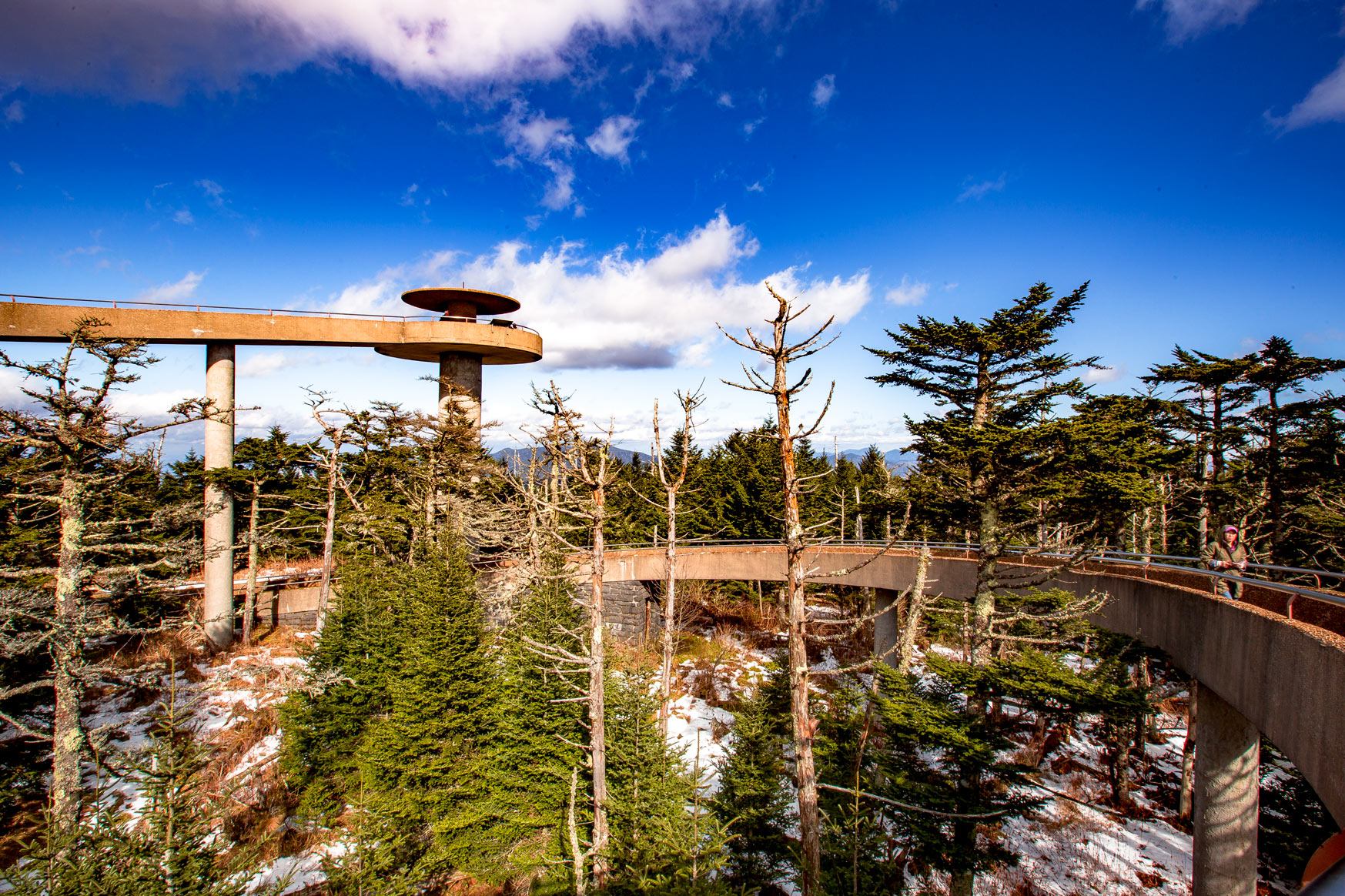
15. The Smokiness Of The Smoky Mountains Is Created By Plants
Our final Great Smoky Mountains National Park Fact has to do with how it got its name. Or, to be more specific, how it got the “smoky” park of its name.
This “smokiness” of the Smoky Mountains is actually a blue-colored fog created by the plants in the national park. The plants give off something called a volatile organic compound, or VOCs.
When there are many VOCs, they create a vapor, making a fog. And since there are millions of plants in the area this is why the Smokies look so smoky.
Watch Our Great Smoky Mountains Film
More Than Just Parks is the ONLY place you can go to find expert guides, beautiful photos, helpful tips, breathtaking films and so much more.
This video is the culmination of two weeks exploring Great Smoky Mountains National Park. We chose Great Smoky Mountains as our second park because of it’s extraordinary display of fall colors, it’s incredibly diverse wildlife population, and it’s importance as the most visited national park in the country.
This film was shot entirely in 4K UHD. We chose to capture this park in the Fall as it is home to one of the most wonderful displays of fall foliage on the planet. Fall is also a wonderful time to watch the elk rutting season and experience cooler, less humid temperatures.
Why Trust Us About Great Smoky Mountains National Park?
We’re Jim Pattiz and Will Pattiz, collectively known as the Pattiz Brothers (and sometimes the Parks Brothers) and we absolutely LOVE the national parks.
You should probably know that we don’t just make this stuff up out of thin air. We’ve spent our entire adult lives exploring and filming America’s national parks and public lands.
We’ve worked with the National Park Service, the Department of Interior, USDA, and the U.S. Forest Service for years creating films on important places and issues. Our work has been featured in leading publications all over the world and even some people outside of our immediate family call us experts on the national parks.

Meet The Parks Brothers
Map Of Great Smoky Mountains National Park
List Of Great Smoky Mountains National Park Facts (Summary)
- Hernando De Soto Came Through The Smoky Mountains
- Cherokees Were Among The Earliest Inhabitants Of The Area
- The Spaniards Actually Did Find Gold In The Smoky Mountains
- The Right Of Eminent Domain Was Crucial To The Establishment Of A National Park
- The First Person To Suggest Establishing A National Park In The Smokies Became The “Mother” Of The Park
- A Knoxville Drug Company President Became Known As The “Father” Of The Park
- A $5 Million Dollar Gift Made The Great Smoky Mountains National Park Possible
- The Creation Of A National Park Kept The Area From Losing All Of Its Forests
- Eleanor Roosevelt Made Several Visits To The Park Including A Hiking Trek
- Great Smoky Mountain National Park Is America’s Most Popular National Park
- The Great Smoky Mountains Are Among The Oldest Mountains In The World
- The Park Is The “Salamander Capital” Of The World
- The Civilian Conservation Corps Built Great Smoky Mountains National Park
- Clingmans Dome Is The Highest Point In The Great Smokies & The State Of Tennessee
- The Smokiness Of The Smoky Mountains Is Created By Plants
We Hope You’ll Follow Our Journey

Our goal here at More Than Just Parks is to share the beauty of America’s national parks and public lands through stunning short films in an effort to get Americans and the world to see the true value in land conservation.
We hope you’ll follow our journey through the parks and help us to keep them the incredible places that they are. If you’re interested in joining the adventure then please sign up below!
Helpful Related Links
Things to Do Great Smoky Mountains: 15 Incredible Things to Do Great Smoky Mountains
Visiting Cades Cove: Helpful Guide & Map for Visiting Cades Cove
North Carolina National Parks: 12 Epic North Carolina National Parks
Tennessee National Parks: 15 Amazing Tennessee National Parks Worth Visiting
National Parks: All 63 National Parks Ranked By Experts
National Monuments: Ultimate List Of National Monuments
Landmarks: 25 Famous Bucket List Landmarks In America (MUST-SEE)
Park Rangers: A Brief (& Informative) History Of America’s National Park Rangers
Gifts: 50 BEST National Park Gifts For The National Park Fan In Your Life
Books: 45 BEST National Parks Books
Revolutionary War Sites: 10 BEST Revolutionary War Sites In America
Civil War Sites: 10 BEST Civil War Sites In America
Civil Rights Sites: 10 BEST Civil Rights Sites In America
National Parks In Movies: Look Familiar? 25+ CLASSIC Movies Filmed In The National Parks
Television Shows: Look Familiar? 10+ CLASSIC Television Shows Filmed In The National Parks

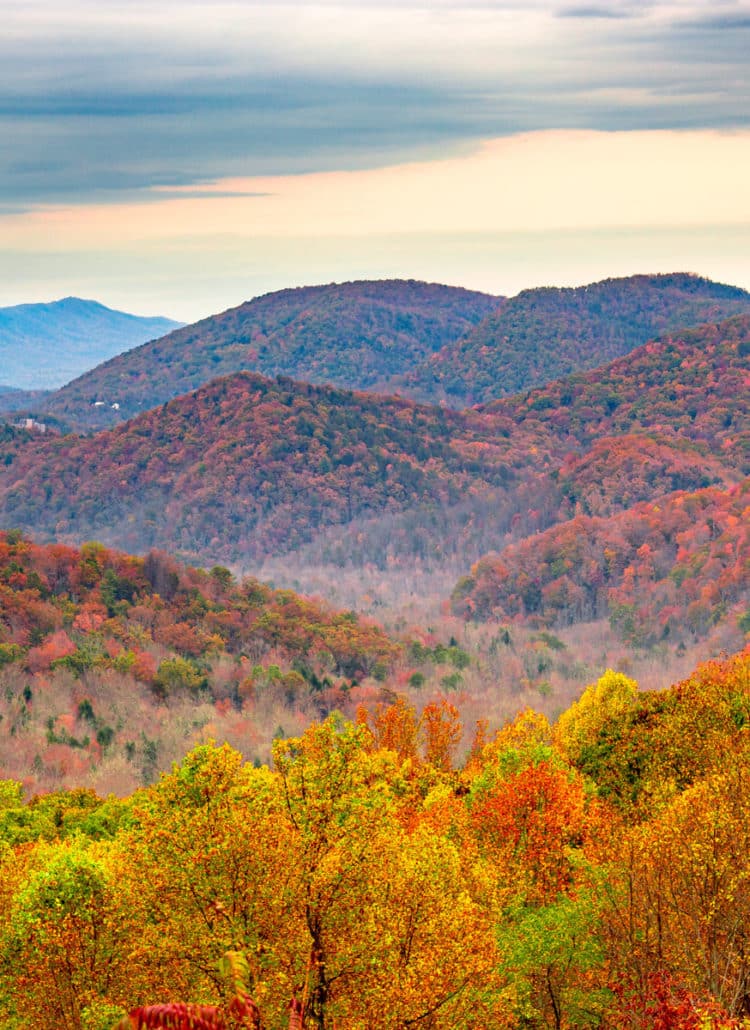
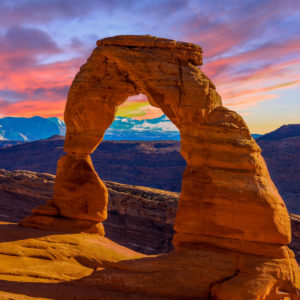

Leave a Reply